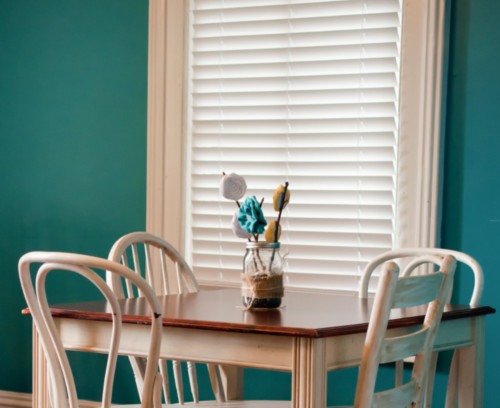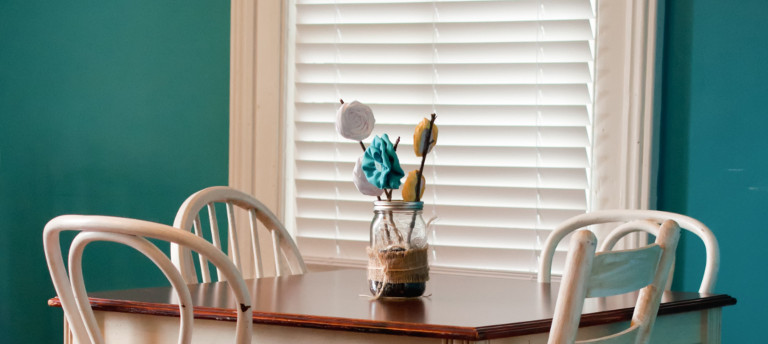
Measuring For Blinds and Shades Made Easy
Measuring For Blinds and Shades Made Easy
Now that you’ve decided on the style of your new window treatments, it’s time to grab your steel measuring tape and get to work.
Because all windows are different sizes and shapes, it’s important to measure as precisely as possible for the perfect fit. With these following tips, measuring for blinds and shades can be easy:
Note: Do not measure your existing blinds or shades. To get the correct fit, measure the
window openings.
Pick a Mount
There are two ways window treatments can be mounted – inside and outside.
Before you measure and place your order, you should decide which mount you’ll be
using. But what’s the difference? How do you know which one to choose?
An inside mount allows blinds to be mounted on the inside of the window frame with the
brackets screwed into the top of the casing.
An outside mount, allows the blinds to be mounted to the front of the window frame or
the wall above the window. Outside mount blinds or shades need to be larger so they can
cover the entire window frame.
Typically, an inside mount gives windows a cleaner look, shows off your window casing,
and more effectively blocks light.
If you can’t mount the inside of the frame due to obstructions or if your windows are too
shallow, it’s best to choose an outside mount.
Once you’ve decided on a mount, you can start measuring!
How to Measure an Inside Mount
Width
- Measure the exact width (left to right) of the inside edge of the window frame in 3
places (top, middle, and bottom). - Measure to the nearest 1/8th inch; round dow for width.
- Take the smallest of the 3 measurements; this is the width that you will order.
- Production department will make the necessary deductions to ensure the blind/shade fits inside your window.
Height
- Measure the exact height (top to bottom) from the top inside edge down to the
window sill in 3 places. - Measure to the nearest 1/8th inch; round up for height.
- Take the largest of the 3 measurements; this is the height that you will order.
How to Measure an Outside Mount
Width
- Measure the exact width (left to right) of the window frame or how wide you
would like the blind to be. - Be sure to measure wide enough to cover the entire window and provide
maximum light coverage. - Example: If the window opening is 26” wide, it might be helpful to order 30” if
the space allows. This will provide 2” coverage on each side of the window. - No deductions/additions will be made to the width ordered.
Height
- Measure the height you would like the blind
to be by measuring top to bottom. - Be sure to measure high enough to cover the entire window and provide
maximum light coverage. - Example: If the window opening is 60” high, it might be helpful to order 64” if
the space allows. This will provide 2” coverage on top and bottom of the window. - No deductions/additions will be made to the height ordered.
If your window doesn’t have a protruding sill, it’s recommended that you start your
measurement 2 or 3 inches below your window opening. Also, add 3 1/2′′ to the top. So,in total, you’ll be adding about 6 1/2′′ to the height of your window opening.
Specialized Measurement Suggestions
All windows are different, and not all products will conform to the measuring instructions
listed above. Below is a brief list of specialized measurement suggestions to help you find the best fit for a variety of windows.
Vertical blinds –Measure width as instructed above: top, middle and bottom, and choose the narrowest. When measuring the height, measure left, middle and right, and choose the tallest, that way the vertical blinds will hang evenly.
Plantation Shutters –To determine if you use an inside mount or outside mount, check your window for squareness before hanging plantation shutters.
Draperies – Along with measuring, there are many other considerations with custom draperies and curtains, such as fullness, puddling, and how much of the window you want exposed.
Arch Window Shades – Unless your window is a perfect arch (height is half the width), you can create a paper template of your window. It’s best to consult a designer for help with this.
Blinds for Doors – There are a few other things to consider when you measure for blindson doors, depending on your trim and door size.
Bay Window Blinds – If not measured properly, some bay windows can have angles thatcause blinds to intersect.
Remember: You can always consult a professional for help with measuring your windows, especially if they require special measuring


